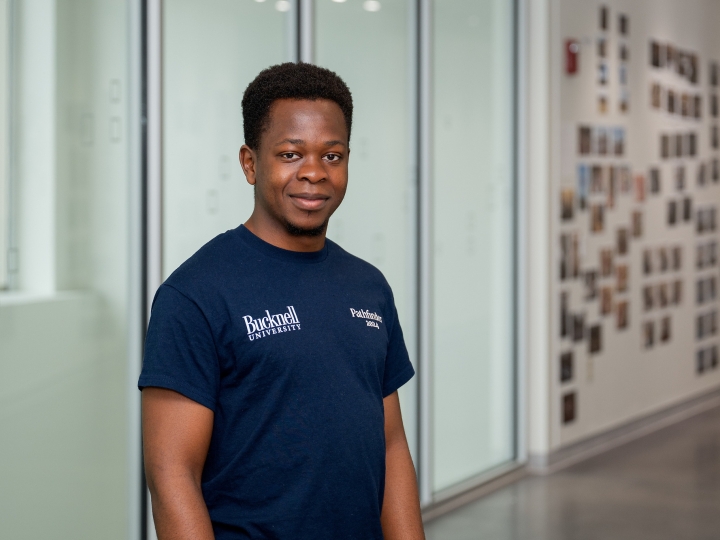Science of Distraction
March 2, 2015
Five minutes into the Feb. 22 Bucknell vs. Boston University men's basketball game, a foul sent Boston guard Cedric Hankerson to the free-throw line.
Behind the basket, the Bucknell student section rose up. Students unfurled sheets of red and green crepe paper, sliding them back and forth in opposite directions. Around them, more students and Bison fans waved neon yellow posters. As Hankerson began his shooting motion, Melissa Hopkins '16 let out a blood-curdling shriek.
Hankerson, a 66-percent free throw shooter, missed one basket, then another.
The Terriers would sink only one of their next three free throws and shot only 61.3 percent from the line for the game, more than 8 percentage points below their season average. The distractions created by Bucknell students appeared to work.
We were elated when the first free-throw shooter missed both shots," Hopkins said. "The surrounding crowd of fans helping us with our illusion really got into it after seeing the effect it seemed to have."
Crowd distractions are part of every NCAA basketball game — they're one reason home-court advantage is so palpable in that sport — but what may have made Bucknell's distractions particularly effective is that they were devised by psychology students with the science of perception in mind.
Professor Aaron Mitchel, psychology, said consistent or coherent patterns of motion, such as the back and forth sliding of crepe paper, appear to be more distracting than random motion, while bright colors like red and neon green draw the eye more than do duller tones. And Hopkins' scream was especially distracting.
"The illusions that work best incorporate a mixture of approaches. In particular, auditory components seem essential because often players don't rely as heavily on visual cues," Mitchel said. "The element of surprise is important, too. You could see that players quickly adjusted, but they started out shooting 1 of 5 — so something unexpected will attract their attention."
The distractions were developed by students in Mitchel's sensation and perception course, which introduces the anatomy and function of human sensory systems. Mitchel asked his students to create distracting illusions based on principles of perception, which they then tested during a practice with the Bucknell men's basketball team.
Student groups tested six illusions (others included mirrors and signs with arrows) and wrote about which worked best and why, based on material they studied in class. They put the methods the team found most distracting into play during Sunday's game.
"We learned that attentional capture can do a pretty decent job at disrupting a shooter's focus," said Hopkins, whose group combined neon yellow posters and a shriek. "We also learned that the effect may fade after a player gets used to it. Expectations can play a role in perception, as we learned in class and it was interesting to see how it worked in real life."
With a little help from the crowd, the Bison bested Boston University 78-69. Mitchel's students, too, came away winners.
"I told the class that if they could lower Boston's free throw percentage I would give them a small amount of extra credit on the next exam," Mitchel said. "I was incredibly proud of my students and thought they did an extraordinary job."

